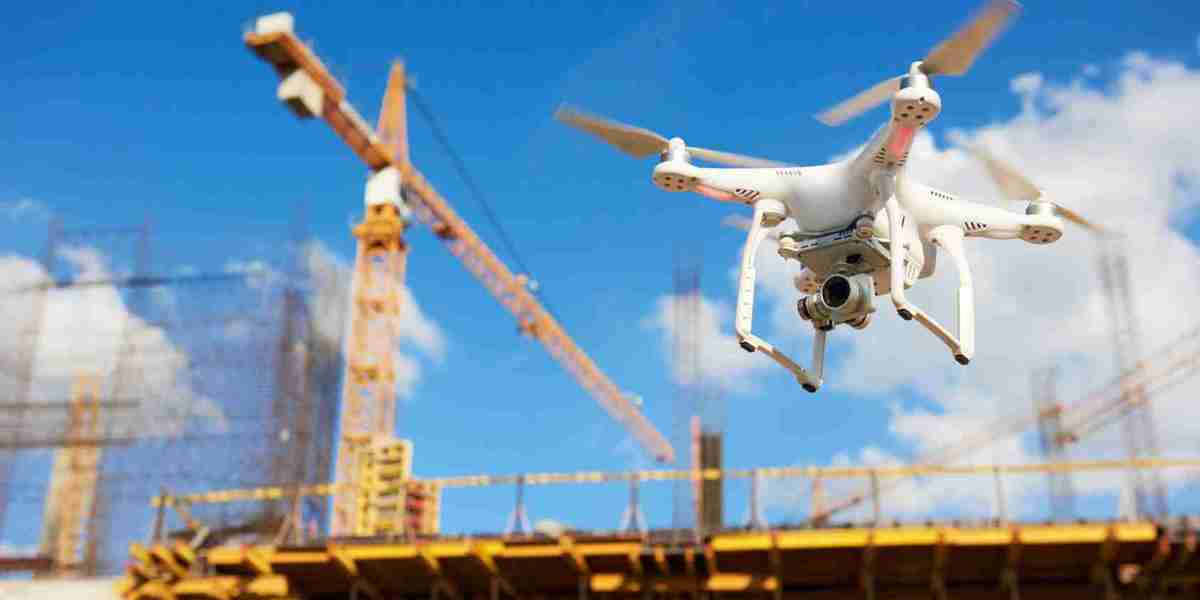The commercial drone market is witnessing significant transformations, not only in technology but also in its business models and service offerings. Drones have rapidly moved from being niche tools for enthusiasts or specific industries to becoming essential components of larger business ecosystems. As the market matures, companies are evolving their strategies to meet growing demand, improve operational efficiency, and unlock new opportunities for clients across a wide range of sectors.
Changing Business Models in the Commercial Drone Market
Traditionally, the commercial drone market was largely dominated by companies that sold drones as products, accompanied by basic services. However, with the increasing adoption of drones in industries like logistics, agriculture, infrastructure inspection, and environmental monitoring, businesses are now shifting towards service-based models.
1. Drone-as-a-Service (DaaS)
One of the most notable trends in the evolving commercial drone market is the rise of Drone-as-a-Service (DaaS). This business model allows companies to provide drone services without requiring customers to purchase and maintain their own drone fleets. DaaS providers typically offer everything from drone deployment and data collection to analytics and reporting.
For example, in industries like construction, companies are using drones to conduct site surveys and monitor project progress, while in agriculture, drones are used for precision farming and crop monitoring. DaaS reduces the entry barrier for companies that need drone services but lack the capital or expertise to manage drones themselves.
2. Subscription-Based Models
Alongside DaaS, subscription-based models are gaining traction, where customers pay for drone services on a recurring basis. These services might include regular aerial surveillance, data collection, or asset inspections. This model allows businesses to access drone capabilities without committing to one-time high investments, thus improving the scalability and sustainability of drone use in commercial operations.
For example, subscription models in real estate may provide businesses with monthly aerial footage for property inspections or promotional materials, helping companies cut costs on traditional photography or manned aerial surveys.
3. Data and Analytics as Core Offerings
With drones generating vast amounts of data—whether it’s aerial imagery, geospatial data, or thermal readings—many commercial drone providers are increasingly focusing on offering data analytics services. Drones equipped with sensors such as LiDAR or multispectral cameras are capable of gathering complex datasets that require specialized analysis.
The commercial drone market is shifting towards businesses that not only provide drone hardware but also deliver advanced analytics. These analytics could include environmental assessments, predictive maintenance reports for infrastructure, or comprehensive mapping of geographical areas. Providing insights from this data enables businesses in sectors like mining, oil & gas, and utilities to make more informed, data-driven decisions.
Service Offerings Transforming the Commercial Drone Market
The evolving business models are accompanied by a shift in the types of services being offered in the commercial drone market. Companies are adapting to meet the varied needs of industries that have recognized the immense value of drone technology. Some key service offerings include:
1. Delivery Services
One of the most discussed applications in the commercial drone market is last-mile delivery. Companies like Amazon Prime Air, Wing, and Zipline are pioneering the use of drones for delivering packages, medical supplies, and groceries. This service has immense potential in areas with difficult road infrastructure or in cities suffering from heavy traffic congestion. By leveraging drones, businesses can promise quicker deliveries, lower operational costs, and reduced carbon emissions.
2. Inspection and Monitoring Services
Drones have become an indispensable tool for inspections and monitoring in industries such as energy, construction, and infrastructure. Drones can conduct routine inspections of power lines, pipelines, wind turbines, and solar panels, often at a fraction of the cost and time it would take using traditional methods. With the ability to collect high-definition imagery, thermal data, and LiDAR scans, drones are becoming the go-to solution for maintenance and safety inspections.
Moreover, asset management has been transformed by drones. In sectors such as mining, oil & gas, and forestry, drones can quickly scan large areas and monitor assets, detecting issues such as leaks, cracks, or erosion before they become more significant problems.
3. Precision Agriculture
Drones have a vital role in precision agriculture, where farmers use aerial data to optimize crop management and boost yields. Drones equipped with multispectral sensors can measure various environmental factors such as soil health, crop conditions, and water usage. This helps farmers apply pesticides, fertilizers, and water more efficiently, minimizing waste and enhancing productivity.
Key Players and New Entrants: Adapting to Market Needs
The commercial drone market continues to see significant investment and innovation. Established players like DJI, Parrot, and Aeryon Labs have long dominated the market, providing high-quality drone hardware. However, new startups are emerging to offer innovative business models and services.
Skydio, for example, is a notable player focusing on autonomous drone solutions, particularly for industries that require precise data collection in complex environments.
SenseFly, known for its high-precision drones for surveying and mapping, continues to expand its data analytics services, setting itself apart from the competition.
DroneBase, a platform for professional drone pilots and drone services, has developed a business model around providing various drone services on-demand, offering solutions for industries such as real estate, construction, and energy.
These companies and others are rapidly adapting their offerings to reflect the diverse applications of drones, from agriculture to energy to infrastructure. Moreover, they are expanding their services to include data analytics and cloud-based solutions, which allow clients to access and interpret the data collected by drones remotely.
The Road Ahead: Evolving Business Models for Growth
The commercial drone market is evolving toward a service-driven and data-rich future, with businesses continually adapting to meet the needs of a broad range of industries. As regulatory frameworks improve and technology advances, we can expect further innovation in both business models and service offerings.
Key factors fueling growth in this space include:
Technological advancements in autonomous drone technology, allowing for more advanced service offerings.
Improved regulatory clarity, ensuring that drone operations can scale safely and efficiently.
Rising demand for cost-effective, data-driven solutions across industries such as agriculture, construction, energy, and logistics.
In conclusion, the commercial drone market is moving beyond hardware sales and towards providing comprehensive services that include data analytics, inspection, delivery, and more. As businesses continue to innovate and offer tailored solutions to their clients, drones will play a pivotal role in reshaping various industries in the years to come.




